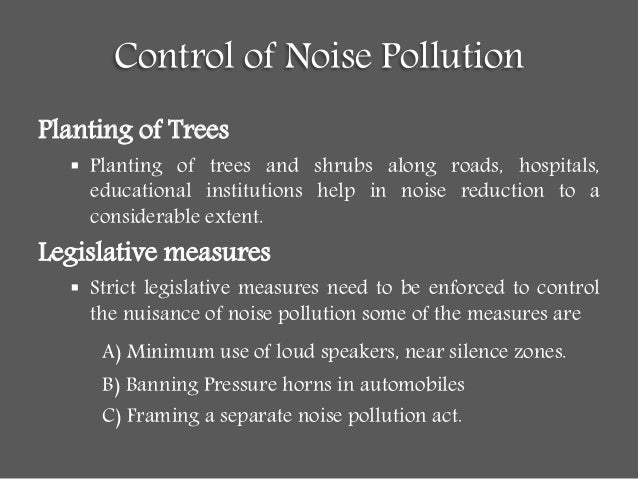

They also do not apply to noise due to military activities in military areas. The Regulations do not apply to noise from domestic activities such as noise: Major airports and those which affect agglomerations are also required to produce and publish their own Noise Action Plans separately. The Action Plans identify Important Areas (areas exposed to the highest levels of noise) and suggests ways the relevant authorities can reduce these. They also require us to produce Noise Action Plans based on the maps for road and rail noise and noise in agglomerations. For example: avoid very noisy leisure activities, opt for alternatives means of transport such as bicycles or electric vehicles over taking the car, do your. The regulations require regular noise mapping and action planning for road, rail and aviation noise and noise in large urban areas (agglomerations). These Regulations apply to environmental noise, mainly from transport. EPA is directed by Congress to coordinate the programs of all Federal agencies relating to noise research and noise control.The Environmental Noise (England) Regulations 2006 (as amended) transpose the Environmental Noise Directive into domestic law for England. While primary responsibility for control of noise rests with State and local governments, Federal action is essential to deal with major noise sources in commerce, control of which require national uniformity of treatment. provide information to the public respecting the noise emission and noise reduction characteristics of such products.authorize the establishment of Federal noise emission standards for products distributed in commerce.establish a means for effective coordination of Federal research and activities in noise control.The Noise Control Act of 1972 establishes a national policy to promote an environment for all Americans free from noise that jeopardizes their health and welfare. We can’t control many of the loud noises we are exposed to, but there are certain sounds we do have control over. 1 Although excessive sound is often the culprit. The major sources of noise include transportation vehicles and equipment, machinery, appliances, and other products in commerce. Noise pollution is defined as any unwanted or excessive sound that has harmful effects on human health and environmental quality. What is noise and its sources Industrial machinery and processes are composed of various noise sources such as rotors, stators, gears, fans, vibrating panels, turbulent fluid flow, impact processes, electrical machines, internal combustion engines etc. Inadequately controlled noise presents a growing danger to the health and welfare of the Nation's population, particularly in urban areas. By controlling noise we can control negative health effects that noise pollution has on everyone. The official text of the Noise Control Act is available in the United States Code, from the U.S.


 0 kommentar(er)
0 kommentar(er)
